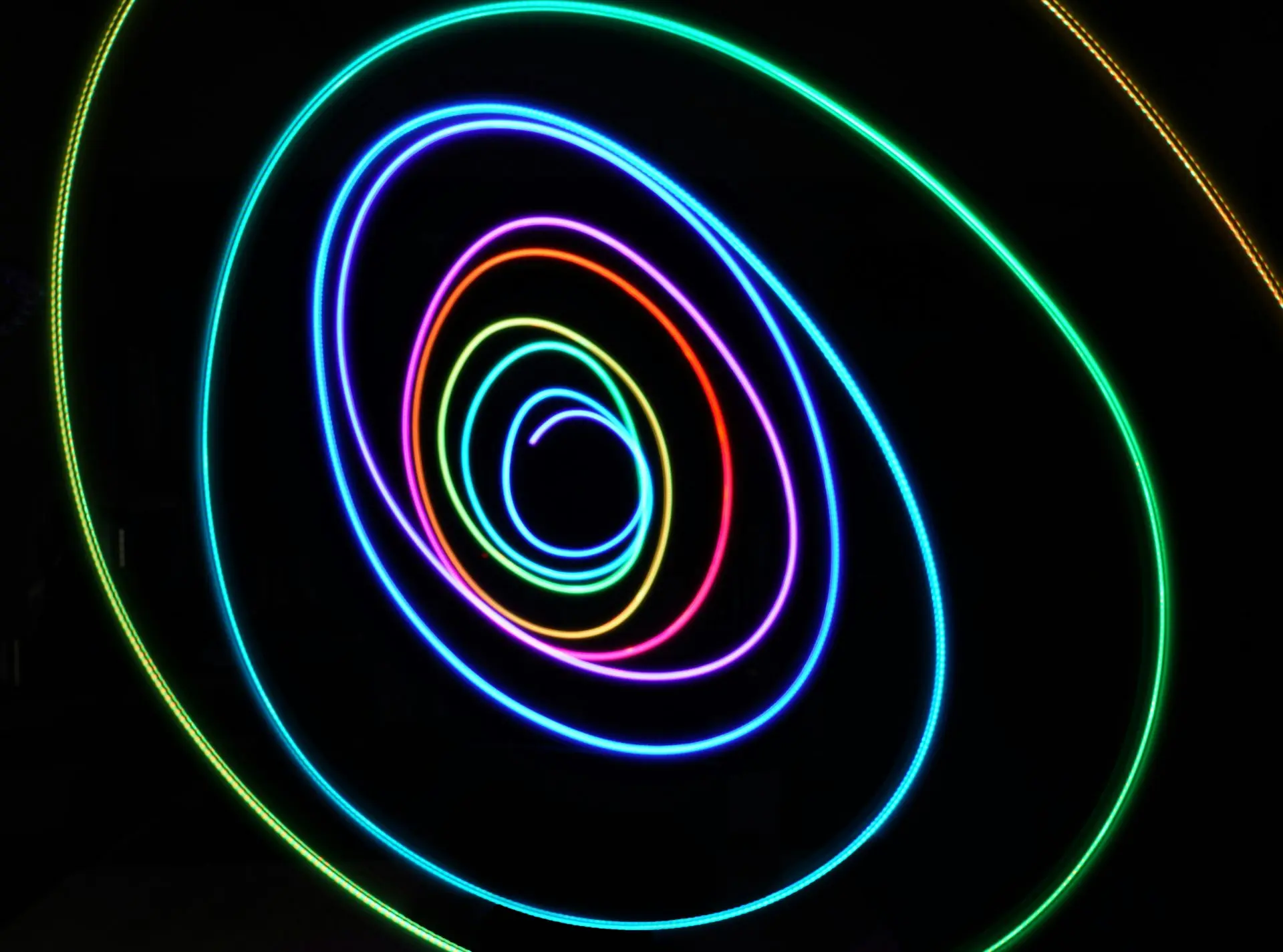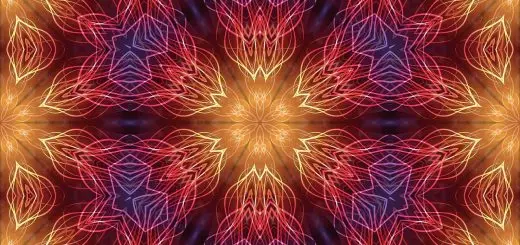Exploring Ancient Esoteric Symbols and Their Meanings

Looking for more amazing products? Check out our online store and explore our collection here! Happy shopping!
Before diving in, please note: This post is for informational purposes only. If you’d like to know more about how we approach topics, feel free to check out our friendly Disclaimer Page.
Hey there, amazing readers! 
We’re committed to delivering quality posts, and your support (even just sticking around despite the ads) means everything to us. So, bear with us, and thanks for helping us keep the good vibes rolling. Now, on to the fun stuff!
TRANSLATE BUTTON AT THE END OF THE ARTICLE
A Quick Overview
Esoteric symbols are fascinating windows into ancient thought and spirituality.
They hold deep meanings, often serving as guides to wisdom, enlightenment, and connection to the universe.
Today, we explore these symbols, revealing the significance they carry and how they still resonate with us in modern times.
Let’s embark on this enlightening journey together!
Unveiling the Mystique of Esoteric Symbols Today
Esoteric symbols are more than just ancient doodles; they resonate with seekers of knowledge.
Today, many people turn to these symbols in search of deeper understanding and personal growth.
You might stumble upon these symbols in books about spirituality, meditation, or even jewelry.
They serve as reminders of our quest for meaning and truth.
The beauty of these symbols lies in their layered meanings.
They speak to us on multiple levels—intellectually, spiritually, and emotionally.
Have you ever felt an inexplicable draw to a certain symbol?
That’s your intuition at work!
These symbols can evoke powerful feelings and thoughts, prompting reflection and self-discovery.
Moreover, modern interpretations of esoteric symbols often blend ancient wisdom with contemporary philosophies.
This fusion allows us to relate to these symbols in a fresh way.
We can find personal significance in symbols like the pentagram or the Ankh, making them relevant to our everyday lives.
As we explore these ancient symbols, consider how they can inspire you.
Each symbol can serve as a touchstone for inner peace or a catalyst for transformation.
I remember using the eye of Horus as a visual aid during meditation, and it helped me center my thoughts.
It’s incredible how these symbols can bridge the past and present!
In our fast-paced world, taking time to ponder these symbols can be a grounding practice.
They remind us of the vastness of human experience and the interconnectedness of all beings.
So, why not dive a little deeper?
Each symbol has a unique story to tell!
The Origins of Esoteric Symbols in Ancient Cultures
To truly appreciate esoteric symbols, we must first understand their origins.
Many of these symbols emerged in ancient civilizations, such as Egypt, Greece, and India.
Each culture infused its symbols with distinct meanings, often shaped by their beliefs and practices.
For instance, the Egyptians utilized symbols extensively in their art and religious life.
The Ankh, symbolizing eternal life, was ubiquitous in their temples and tombs.
It served not only as a decorative element but also as a potent spiritual emblem.
Understand the Powerful Law of Karma and Its Impact – Explore Here!
Similarly, the Greeks developed their symbols through philosophical and mystical traditions.
The pentagram, for example, was central to Pythagorean teachings, representing harmony and balance.
It spoke to their exploration of mathematics as a reflection of the universe’s order.
In India, symbols like the lotus flower and Om resonate deeply with spiritual seekers.
The lotus signifies purity and enlightenment, while Om is considered the primordial sound, the essence of the universe.
These symbols guide practitioners on their spiritual journey, encouraging mindfulness and meditation.
Another important aspect is the transmission of symbols across cultures.
Many symbols have traveled through time, evolving but retaining their core meanings.
For example, the ouroboros—a serpent eating its tail—appears in various cultures, symbolizing the cyclical nature of life.
As we examine these origins, it’s clear that ancient symbols are a tapestry woven from the threads of human experience.
They capture our aspirations, fears, and dreams.
Isn’t it fascinating to think about how these symbols continue to influence us today?
Common Themes Found in Ancient Esoteric Symbols
As we dig deeper into ancient esoteric symbols, several recurring themes emerge.
These themes often reflect universal truths and human experiences, which explains their lasting impact.
Life and Death: Many symbols explore the cycle of life and the inevitability of death.
The Ankh, for instance, embodies life, while the ouroboros represents the eternal cycle of creation and destruction.
Balance: Symbols like the yin-yang or the pentagram emphasize harmony.
They remind us of the duality in life—light and dark, male and female, chaos and order.
Unity: Numerous symbols express the interconnectedness of all beings.
The flower of life encapsulates this idea beautifully, representing the fundamental patterns of creation.
Transformation: Symbols often showcase personal and spiritual transformation.
The phoenix rising from the ashes is a powerful image of rebirth and renewal.
Spiritual Guidance: Many symbols serve as guides or protectors in spiritual practices.
The eye of Horus, for example, symbolizes protection and insight.
Knowledge and Wisdom: Esoteric symbols frequently convey the pursuit of knowledge.
The ancient Greeks, for instance, valued wisdom, and their symbols reflect this aspiration.
Nature: Symbols often draw inspiration from the natural world.
The lotus and tree of life highlight our connection to nature and the universe.
Mystery: A sense of mystery permeates esoteric symbols.
They invite us to explore deeper meanings and personal interpretations.
Divinity: Many symbols represent the divine or higher consciousness.
They serve as bridges between the earthly realm and the spiritual.
Journey: The labyrinth symbolizes the spiritual journey we all undertake, emphasizing that the path may be winding but ultimately leads to enlightenment.
Recognizing these themes can enrich our understanding of esoteric symbols and their relevance to our lives.
They serve as mirrors reflecting our thoughts and feelings.
Release the Weight of Karma and Embrace Freedom – begin here.
Have you ever found a symbol that resonated with a specific life experience?
I know I have!
The Role of Geometry in Esoteric Symbolism
Geometry plays a crucial role in the language of esoteric symbols.
The ancient belief that geometry aligns with the core structures of the universe is fascinating.
Shapes and patterns communicate profound truths about existence.
Consider the circle, representing unity and wholeness.
It indicates the infinite nature of the universe, with no beginning or end.
The circle often appears in symbols like the mandala, guiding meditation and reflection.
Triangles are another powerful geometric shape, symbolizing stability and balance.
For instance, the pyramids of Egypt are not only architectural marvels but also spiritual symbols, reflecting the connection between the earth and the divine.
The Fibonacci sequence reveals the beauty of nature’s design.
This mathematical pattern manifests in many natural forms, such as seashells and flowers.
The golden ratio, derived from this sequence, is often seen in art and architecture, reflecting harmony and aesthetics.
Geometric symbols like the Flower of Life encapsulate the interconnectedness of all things.
Each circle intertwines, illustrating the idea that life is a web of relationships.
Understand the Powerful Law of Karma and Its Impact – Explore Here!
These patterns serve as reminders that we are all part of a greater whole.
Additionally, sacred geometry has been a part of various spiritual traditions.
It emphasizes the importance of shapes and patterns in the design of sacred spaces.
These shapes resonate with spiritual energies, enhancing meditation and spiritual practices.
Learning about geometry in esoteric symbols can inspire creative expression.
Artists and architects often reference these shapes, infusing their work with deeper meanings.
Have you ever noticed geometric patterns in art or architecture?
It adds a whole new layer of appreciation!
The beauty of geometry in esoteric symbolism lies in its ability to blend science and spirituality.
It encourages us to see the world through a different lens.
So, next time you encounter a geometric symbol, think about the wisdom it conveys!
Unlocking the Secrets of the Ankh and Its Power
The Ankh is one of the most recognizable symbols from ancient Egypt, often referred to as the "key of life." Its unique shape—a cross with a loop at the top—holds profound significance.
This symbol represents the concept of life and immortality, making it a powerful emblem for both the living and the deceased.
Historically, the Ankh was often depicted in the hands of Egyptian deities, suggesting that they bestow life upon humanity.
The symbol was frequently found in tombs and temples, serving as a reminder of the eternal life that follows death.
This connection to the afterlife made the Ankh a vital part of Egyptian spiritual practices.
In modern times, the Ankh has transcended its ancient origins.
It has become a symbol of unity and peace, often associated with African heritage and spirituality.
Many people wear Ankh jewelry as a representation of their connection to life, love, and resilience.
The power of the Ankh lies not just in its historical significance but in its ability to inspire.
It encourages us to reflect on our own life journey and the legacy we wish to leave behind.
When I wear an Ankh pendant, it reminds me to cherish every moment and seek purpose in my actions.
In addition to personal significance, the Ankh serves as a symbol of healing.
Its looped top suggests the cyclical nature of life, reinforcing the idea that every end is a new beginning.
This duality can be comforting during times of change or loss.
If you’re drawn to the Ankh, consider incorporating it into your spiritual practices.
It may serve as a focal point during meditation or visualization exercises.
Allow yourself to connect with its energy and discover what wisdom it has to offer you.
The Ankh embodies the essence of existence, reminding us of the interconnectedness of life.
Whether you view it as a historical artifact or a spiritual symbol, its power is undeniable.
The Fascinating Story of the Flower of Life Symbol
The Flower of Life is an intricate geometric figure composed of multiple overlapping circles, creating a pattern that resembles a flower.
This symbol is imbued with rich meaning and can be found across various cultures throughout history.
At its core, the Flower of Life symbolizes creation and interconnectedness.
Each circle represents a different aspect of life, and together they illustrate how all beings are linked.
This interconnection resonates with many spiritual teachings today, emphasizing that we are all part of a larger whole.
The Flower of Life has been discovered in ancient temples and artifacts around the world, from Egypt to China and beyond.
Its widespread presence suggests that our ancestors recognized the importance of interconnectedness long before modern science validated it.
Many people use the Flower of Life as a meditative focus, believing it can enhance spiritual growth and consciousness.
The geometric complexity encourages deep contemplation and reflection on the nature of existence.
When I meditate on this pattern, I often feel a sense of peace and clarity wash over me.
In addition to its spiritual meaning, the Flower of Life has practical applications in art and design.
Artists often draw inspiration from its symmetry and beauty, incorporating it into their work to convey harmony and balance.
If you’re intrigued by the Flower of Life, consider incorporating it into your environment.
It can be displayed as wall art, used in jewelry, or even meditated upon.
Let its energy inspire creativity and connection in your life.
Ultimately, the Flower of Life serves as a reminder of the beauty of existence and the shared journey we all embark upon.
It invites us to celebrate our connections with others and the universe.
Understanding the Symbolism Behind the Ouroboros
The ouroboros, a snake or dragon eating its tail, is a symbol steeped in mystery and meaning.
This ancient symbol represents the cyclical nature of life, death, and rebirth.
You might have seen it in various cultures, from ancient Egypt to Gnosticism and alchemy.
At its core, the ouroboros signifies the concept of eternity.
The act of the serpent consuming its tail highlights the idea that life is an endless cycle.
This symbolism invites us to reflect on how endings can lead to new beginnings, and how transformations are a natural part of existence.
In alchemy, the ouroboros was associated with the process of transformation.
Alchemists viewed it as a representation of the ultimate goal—turning base metals into gold or achieving spiritual enlightenment.
The ouroboros embodies this journey, reminding us that growth often requires surrender and renewal.
The ouroboros also speaks to the dual nature of existence.
It represents both creation and destruction, light and darkness, and the interplay between opposing forces.
This balance is essential to our understanding of life.
We all experience ups and downs, and the ouroboros encourages us to embrace both sides.
In personal reflection, I find the ouroboros to be a powerful reminder to let go of what no longer serves me.
It encourages me to welcome change and view challenges as opportunities for growth.
Have you ever had a situation where something ended, only for something beautiful to emerge from it?
The ouroboros invites us to contemplate our personal cycles—habits, relationships, and dreams.
By acknowledging these cycles, we can gain insight into our lives and make conscious choices for transformation.
In conclusion, the ouroboros serves as a profound symbol of life’s continuous flow.
It encourages us to embrace the journey and recognize that every ending is a prelude to a new beginning.
How the Pentagram Represents Balance and Harmony
The pentagram, a five-pointed star, has a long and diverse history.
Often associated with spirituality and the occult, it represents balance and harmony.
The five points of the star are believed to correspond to the elements: earth, air, fire, water, and spirit.
Each element holds its own significance and power.
Earth grounds us; air inspires us; fire ignites our passions; water nourishes our emotions; and spirit connects us to the divine.
The pentagram serves as a reminder of the delicate balance we must maintain among these elements in our lives.
In ancient Greece, the pentagram was linked to the Pythagoreans, who saw it as a symbol of mathematical harmony.
They believed that it embodied the principles of balance and the interconnectedness of all things—a reflection of the universe’s inherent order.
The pentagram also carries protective qualities in various traditions.
Many people use it as a talisman, believing it wards off negativity and invites positive energy.
When I see a pentagram, it often reminds me to keep my focus on balance and harmony in my own life.
This symbol’s versatility extends to modern practices as well.
Wiccans and other pagan traditions often incorporate the pentagram into rituals and ceremonies.
It serves as a sacred symbol, representing the elements and the divine.
If you’re drawn to the pentagram, consider using it as a focal point during meditation or as a guiding principle in your daily life.
Reflect on the elements it represents and how you can cultivate balance in your relationships and endeavors.
Ultimately, the pentagram is a beautiful reminder of the importance of harmony within ourselves and our surroundings.
It encourages us to align with the rhythms of nature and honor the connections we share with all living beings.
Exploring the Mystical Meanings of the Eye of Horus
The Eye of Horus, also known as the "All-Seeing Eye," is an ancient Egyptian symbol representing protection, healing, and royal power.
This powerful emblem has captivated many, both in ancient times and today, due to its deep spiritual meaning.
Legend has it that Horus, the sky god, lost his left eye during a battle with Set, the god of chaos.
His eye was later restored by Thoth, the god of wisdom.
This story symbolizes the restoration of order and balance after chaos.
The Eye of Horus serves as a reminder that healing and protection are always possible.
In ancient Egypt, the Eye of Horus was often used as an amulet to safeguard against danger.
It represented divine protection, ensuring that the wearer would be shielded from harm.
Many tombs also featured the Eye to provide spiritual protection in the afterlife.
Today, the Eye of Horus continues to inspire people on their spiritual journeys.
It’s a symbol of intuition and inner vision, urging us to look beyond the surface of things.
I often find myself reflecting on the Eye of Horus during meditation, inviting clarity and insight into my life.
Furthermore, the Eye of Horus connects to the concept of seeing the “bigger picture.” It encourages us to seek wisdom and understanding beyond our immediate experiences.
In a world filled with distractions, this symbol prompts us to tune into our inner selves and trust our instincts.
Consider incorporating the Eye of Horus into your personal practices.
Whether through art, jewelry, or meditation, let this symbol remind you of your own inner strength and intuition.
It can serve as a guiding light during challenging times.
In essence, the Eye of Horus is a powerful symbol of protection, insight, and healing.
It encourages us to embrace our intuition and trust the journey we’re on.
The Significance of the Labyrinth in Spiritual Journeys
The labyrinth is a captivating symbol representing the journey of life and spiritual discovery.
Unlike a maze, a labyrinth has a single path that leads to the center and back out again.
This structure symbolizes the notion that life is a journey with a clear destination—inward exploration.
Historically, labyrinths have been found in various cultures, often associated with spiritual practices.
They are used as tools for meditation and reflection, allowing individuals to connect with their inner selves.
Walking a labyrinth can be a profound experience, as it encourages mindfulness and presence.
As I’ve walked labyrinths in various settings, I’ve found that each journey evokes different emotions.
Sometimes it brings clarity, while other times, it offers a chance for introspection.
The repetitive motion of walking creates a meditative state that can lead to insights and revelations.
In many traditions, the labyrinth is seen as a pilgrimage—a path toward enlightenment.
It encourages us to embrace the twists and turns of our lives while reminding us that there’s always a way through.
The journey may be winding, but it ultimately leads to self-discovery.
Labyrinths also symbolize the idea of returning home.
As we navigate our life paths, we may encounter challenges or setbacks, but we always find our way back to ourselves.
This concept resonates with many people who feel lost or disconnected from their true selves.
If you have the opportunity, consider walking a labyrinth.
It can be a serene way to connect with your inner thoughts and emotions.
Allow the experience to unfold naturally, and listen to what arises during your journey.
In conclusion, the labyrinth invites us to embrace our spiritual journeys with an open heart.
It reminds us that every step, every twist, and every turn is part of the greater path toward self-awareness.
The Connection Between Nature and Esoteric Symbols
Nature has always influenced human thought, and esoteric symbols are no exception.
Many ancient symbols draw inspiration from the natural world, reflecting our deep connection with the earth and its cycles.
For example, the lotus flower is a powerful symbol of purity and enlightenment.
It grows in muddy waters, emerging beautifully above the surface.
This imagery resonates with our own journeys, reminding us that we can rise above challenges and find beauty in adversity.
Similarly, the tree of life symbolizes growth, strength, and interconnectedness.
Its branches represent the myriad paths we can take in life.
This symbol invites us to reflect on our roots and the connections we share with others.
In many spiritual traditions, nature serves as a source of wisdom and guidance.
The changing seasons remind us of the cycles of life, offering lessons in patience and acceptance.
The interconnectedness of all beings emphasizes our responsibility to care for the earth.
I often find solace in nature, whether through hiking in the woods or tending to my garden.
These experiences ground me and remind me of the beauty that surrounds us.
Nature can inspire creativity and clarity, and incorporating natural elements into our lives can enhance our spiritual practices.
If you’re drawn to nature, consider incorporating it into your personal rituals.
Whether it’s collecting stones, planting flowers, or simply observing the changing seasons, let nature be a source of inspiration and connection.
Ultimately, the connection between nature and esoteric symbols enriches our understanding of the world.
These symbols reflect the beauty and complexity of existence, reminding us of our place in the grand tapestry of life.
How to Incorporate Esoteric Symbols into Daily Life
Incorporating esoteric symbols into your daily life can be a wonderful way to enhance your spiritual journey.
These symbols can serve as reminders of your intentions, guiding you toward personal growth and self-discovery.
Wear Symbols: Consider wearing jewelry that features your favorite symbols.
Whether it’s a pendant of the Ankh or the Eye of Horus, wearing these symbols can serve as a daily reminder of your spiritual intentions.
Create an Altar: Set up a small altar in your home where you can display symbols that resonate with you.
Include items like crystals, candles, and meaningful symbols to create a sacred space for reflection and meditation.
Art and Decor: Incorporate esoteric symbols into your home decor.
Whether through wall art or decorative objects, these symbols can create an environment that fosters mindfulness and inspiration.
Meditation Practices: Use symbols as focal points during meditation.
Visualize the symbol in your mind’s eye, allowing its energy to guide you toward clarity and insight.
Journaling: Reflect on the meanings of different symbols in a journal.
Write about how they resonate with your life experiences, aspirations, and challenges.
Nature Connection: Find symbols in nature.
Observe patterns in leaves, flowers, and trees, and consider how these natural forms represent deeper truths.
Mindfulness Reminders: Use symbols as reminders to practice mindfulness throughout your day.
When you see a symbol, pause and take a moment to breathe and reflect.
Community Engagement: Share your interest in esoteric symbols with friends or in spiritual communities.
Engaging in discussions can deepen your understanding and expand your perspectives.
Rituals and Ceremonies: Incorporate symbols into personal rituals or ceremonies.
Whether celebrating milestones or marking transitions, these symbols can enhance the meaning of your experiences.
Be Open to New Symbols: Stay curious and open to discovering new symbols.
As you grow and evolve, new symbols may resonate with you and offer fresh insights.
By incorporating esoteric symbols into your life, you invite their wisdom and energy into your everyday experiences.
They can serve as guides, protectors, and reminders of the deeper truths we seek.
So, go ahead and explore these symbols—who knows what wonderful discoveries await you!
Conclusion
Exploring ancient esoteric symbols offers us a glimpse into the profound wisdom of our ancestors.
These symbols resonate with our collective experiences and serve as guiding lights on our personal journeys.
From the Ankh and the Flower of Life to the Eye of Horus and the labyrinth, each symbol carries unique meanings that can inspire and empower us.
As we navigate our own lives, let’s embrace the teachings these symbols impart.
They encourage us to reflect on our connections, seek balance, and honor the cycles of life.
By incorporating these symbols into our daily practices, we can deepen our understanding of ourselves and the world around us.
So, let’s continue to explore these meaningful symbols.
They remind us that we are never alone on our journeys and that each step leads us toward greater insight and connection.
Whether you wear a symbol, meditate on it, or simply reflect on its meaning, allow it to enrich your life in unexpected ways.
Here’s to the wisdom of ancient symbols guiding us into the future!

The Enlightenment Journey is a remarkable collection of writings authored by a distinguished group of experts in the fields of spirituality, new age, and esoteric knowledge.
This anthology features a diverse assembly of well-experienced authors who bring their profound insights and credible perspectives to the forefront.
Each contributor possesses a wealth of knowledge and wisdom, making them authorities in their respective domains.
Together, they offer readers a transformative journey into the realms of spiritual growth, self-discovery, and esoteric enlightenment.
The Enlightenment Journey is a testament to the collective expertise of these luminaries, providing readers with a rich tapestry of ideas and information to illuminate their spiritual path.
Our Diverse Expertise
While our primary focus is on spirituality and esotericism, we are equally passionate about exploring a wide range of other topics and niches 

To ensure we provide the most accurate and valuable insights, we collaborate with trusted experts in their respective domains 
Our blog originally focused on spirituality and metaphysics, but we’ve since expanded to cover a wide range of niches. Don’t worry—we continue to publish a lot of articles on spirituality! Frequently visit our blog to explore our diverse content and stay tuned for more insightful reads.
Hey there, amazing reader! 
Check out our store here and take a peek at some of our featured products below! Thanks for being awesome!















